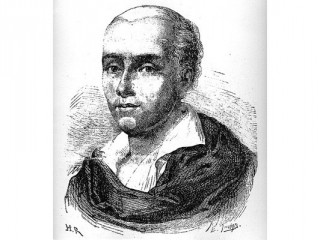
Jacques Etienne Montgolfier biography
Date of birth : 1945-01-07
Date of death : 1799-08-02
Birthplace : Annonay, France
Nationality : French
Category : Arhitecture and Engineering
Last modified : 2011-08-09
Credited as : Inventors, industrialist, hot air balloon
The French inventors and industrialists Joseph Michel and Jacques Étienne Montgolfier were brothers who invented the hot-air balloon, an important step in the development of aeronautics.
Both Montgolfier brothers were born at Annonay, Joseph in 1740, Étienne on Jan. 7, 1745. Their father owned a large paper mill and gave them a good education. Joseph was placed in a private school, but he left to start a chemical business by himself. Paris, with its famous scientists, attracted him, but after a short stay he was called back to Annonay to help his father run the paper mill. He promptly tried to introduce new techniques into the business, which resulted in his father's giving him funds to establish a business of his own. However, Joseph's inexperience soon led to considerable financial losses.
Étienne's youth was a more conservative one. He received training as an architect, which included some scientific education. When he was 30, his father retired and placed him at the head of the business. Étienne soon earned a name in the paper industry through his careful and profitable improvements in papermaking.
Whatever brought the attention of the brothers to using hot air for a balloon, and whether they even, at first, understood why smoke rose, is not clearly known. But it is known that they rapidly passed from a toy-sized balloon to a large one, and they soon learned that the best fuel was straw mixed with carded wool. The first public experiment, on June 5, 1783, demonstrated to an assembly of the local nobility of Annonay how a balloon some 35 feet in diameter could rise in 10 minutes to a height of well over a mile.
News of the experiment spread rapidly. The central scientific institution in France, the Academy of Sciences, invited the Montgolfier brothers to Paris to repeat their experiment. Bad weather destroyed the first balloon, but a second attempt was made, at Versailles on Sept. 19, 1783, in the presence of the King and his court. The balloon, as was proper for the royal occasion, was elegantly decorated. This time it carried a sheep, a rooster, and a duck. It rose to over 1,000 feet and then floated down.
The successful exhibition before royalty made the Montgolfier brothers national figures. A gold medal was struck in their honor. Étienne received the ribbon of St. Michael; Joseph obtained a pension of 1,000 livres; and their father obtained a patent of nobility. Balloons caught the attention of the public, and the term montgolfiere was even applied to hair fashions and dresses.
In January 1784 at Lyons, to test whether balloons could carry passengers, Joseph made a mammoth 130-foot-diameter balloon, probably the largest hot-air balloon ever made. After freezing rain and a fire made Joseph's first effort unsuccessful, a second attempt was made on January 19. After a 15-minute flight with Joseph and two other passengers, the balloon made a rather rapid descent but landed without injury. The successful aeronauts were carried in triumph into Lyons. But the Montgolfier brothers soon saw themselves superseded by the exploits of others: long-distance flights, even Channel flights, were soon being attempted. Their real hope, that of creating aerial navigation, was dashed when they found they could not devise any means of controlling the flight of the balloons.
Étienne returned to his paper mill; he died at Neuchatel, Switzerland, on Aug. 2, 1799. Joseph also returned to the paper industry. His inventive mind turned to other devices; he invented the hydraulic ram and devised an apparatus to distill liquids at reduced temperature and pressure and an apparatus to dry fruit under such conditions. Among many additional honors bestowed on him were membership in the Legion of Honor and appointment to the Institute of France. He died at Balaruc-les-Bains on June 26, 1810.
















